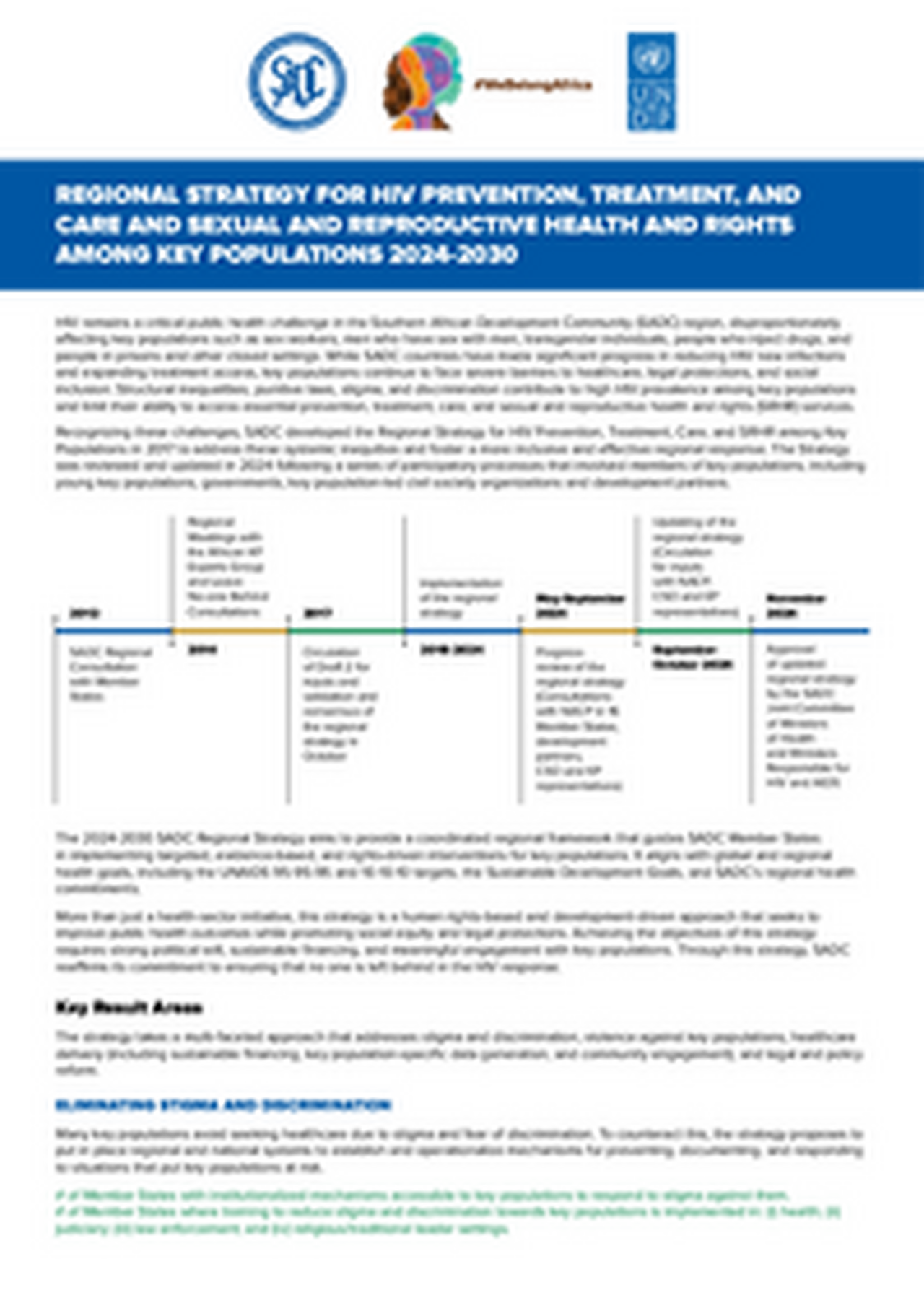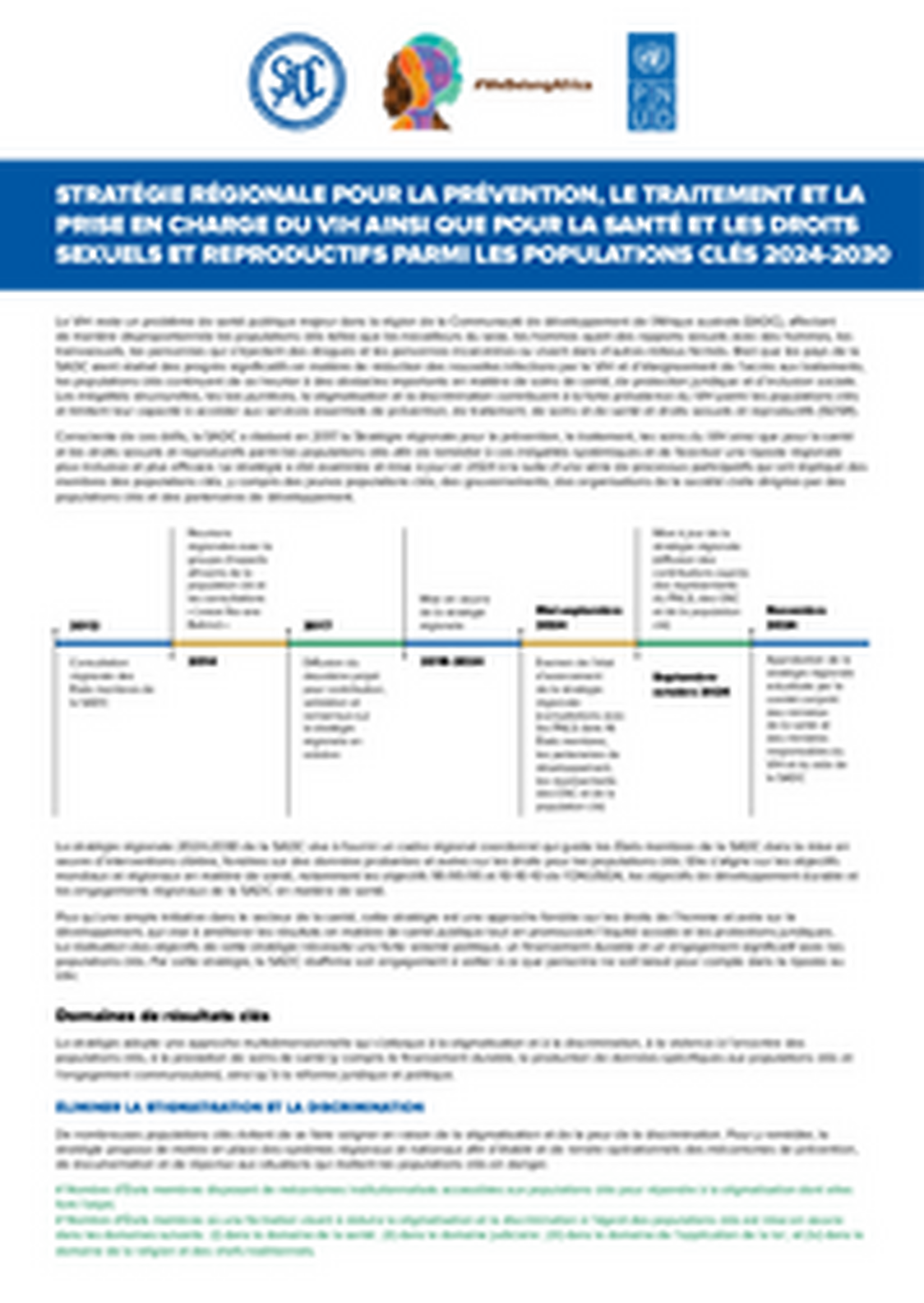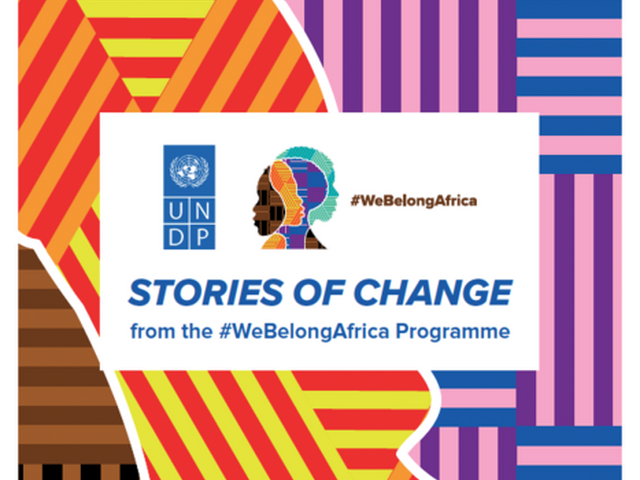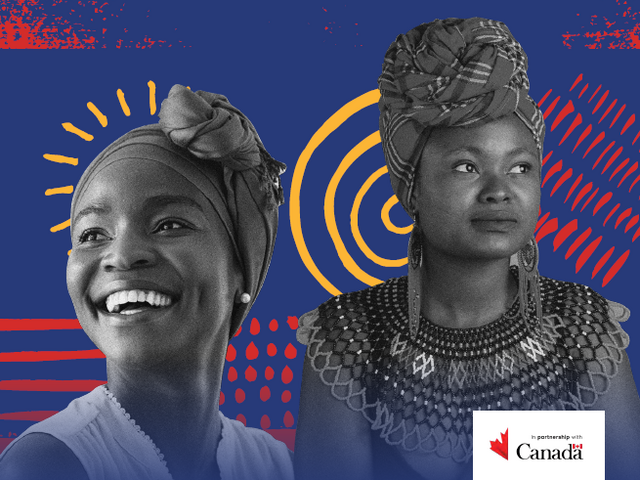Brief: SADC Regional Strategy for HIV and SRHR among Key Populations 2024–2030
HIV remains a critical public health challenge in the Southern African Development Community (SADC) region, disproportionately affecting key populations such as sex workers, men who have sex with men, transgender individuals, people who inject drugs, and people in prisons and other closed settings. While SADC countries have made significant progress in reducing HIV new infections and expanding treatment access, key populations continue to face severe barriers to healthcare, legal protections and social inclusion. Structural inequalities, punitive laws, stigma and discrimination contribute to high HIV prevalence among key populations and limit their ability to access essential prevention, treatment, care, and sexual and reproductive health and rights (SRHR) services.
Recognizing these challenges, SADC developed the Regional Strategy for HIV Prevention, Treatment, Care, and SRHR among Key Populations in 2017 to address these systemic inequities and foster a more inclusive and effective regional response. The Strategy has been reviewed and updated in 2024 following a series of participatory processes. The 2024-2030 SADC Regional Strategy aims to provide a coordinated regional framework that guides SADC Member States in implementing targeted, evidence-based and rights-driven interventions for key populations. More than just a health-sector initiative, the Strategy is a human rights-based and development-driven approach that seeks to improve public health outcomes while promoting social equity and legal protections.
This Brief provides a summary of the Strategy. The full version is available on the SADC website.
*Resources published on the Knowledge Hub are the sole responsibility of the organization concerned. Publications do not necessarily reflect the views of 2gether 4 SRHR, nor its participating organizations.








